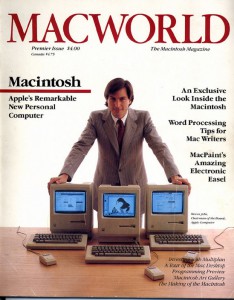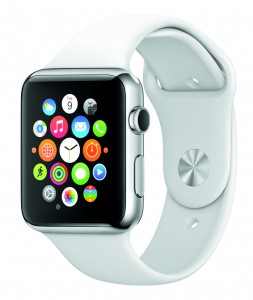By now, if you’re in the market for a new iPhone, you’ve probably scoured a dozen articles advising how to choose which model to get: the 4.7 inch iPhone 6 or the 5.5 inch iPhone 6 Plus. So, while I have no illusions that this is the first or only article you’ve read on this subject, it could be the last one you need to read.
For some buyers, there is no tough choice here. They know exactly what they want. “It’s iPhone 6. No way I want a phone that’s so big that my small hands can’t even grasp it” or “The 6 Plus is the size I’ve been waiting for. I can finally dump my iPad mini and go with just one portable device.”
For the rest of us, and this includes myself as well as I suspect the vast majority of buyers, the decision is far less certain. That’s what drove people to make cut-outs of the different sizes before pre-ordering last week, so they could take the models for a quasi-test drive. The trouble is, even if you now go to your local store and play with each model for awhile, the choice may still not be clear.
Each model has its pros and cons. For example, I found it impossible to hold and use the iPhone 6 Plus as a camera one-handed. But, the iPhone 6 Plus has Optical Image Stabilization not present with the iPhone 6. Which way does the balance tip here? I’m not sure.
And so it goes. Do I want the largest possible display, an iPhone that can almost double as an iPad? Or do I want a more compact, portable device that is still easy to use with one hand. If I could test out each device for a couple of weeks, I might figure this out for sure. But that’s not financially practical.
Whatever I decide, it doesn’t mean that I would recommend the same choice for you. Which model is better for you depends on how you see yourself using the iPhone. The more you view the phone as a pocket computer rather than a phone with extra features, the more you’ll likely lean toward the Plus.
In the end, neither model may prove the right one in all situations. You’ll have to figure out which device you prefer most of the time because you won’t prefer either model all of the time.
As a related example, I purchased both an iPad Air and an iPad mini last year. For the first month or so, I alternately used one or the other — in attempt to decide which one would be my primary device. Some days the mini seemed too small — when I was reading the New York Times or playing a game where precision aiming was important. Other times, the iPad Air seemed too big…when reading a book or when using it for almost anything while out of the house. The Air was the better choice when paired with a physical keyboard. It’s larger size made it superior for watching video. The mini was better when I wanted to quickly look things up on the web, check the weather or other similarly small tasks.
In the end, I stayed with the Air, as it was the device I wound up wanting most of the time. But there were still days I would have preferred the mini. And so it will be with the iPhone 6 and 6 Plus.
Let’s not make too much of this dilemma. This should be the worst problem you ever have, as my mother would have said. Both iPhones are spectacularly designed devices. Neither one will be a disappointment.
I am especially impressed with their displays. I didn’t think they could be that much better than the one on my iPhone 5S (which was already excellent). But they are. The images are brighter, sharper and seem less pixellated. They almost appear as if they are painted on the glass.
So, when crunch time came, what was my choice? I went with the iPhone 6.
What ultimately tipped the scales for me was that the iPhone 6’s display was larger than I anticipated. And I mean that as a good thing. After reading all the hype following Apple’s media event, I was prepared for the iPhone 6’s display to be almost unrecognizably bigger than my iPhone 5S. Not so. It’s way bigger. I can type more accurately with it. I read small text more easily. Photos appear distinctly larger. Games are more pleasant to play. The iPhone 6 turned out to be sufficiently big that I didn’t feel the need for the larger 6 Plus with all the compromises it required.
Still, the iPhone 6 Plus was not as ungainly big as I had imagined. Passing one critical test, it fit easily into the front pocket of my blue jeans. If the 6 Plus was my only option, I would be content with it. Who knows? Maybe I will be ready to move up to an iPhone 6S Plus next year. But no Plus for me this time around.
One more thing: my iPhone — with its curved glass display, super-thin design and space-gray back — looks and feels so good that I decided a case would ruin the effect. So I am going without a case for the first time.
My decisions have been made. Once I gave up on the idea that there had to be a sure “correct” decision, it became a lot easier to make one. Hopefully, this helps in making your choice. Good luck!


